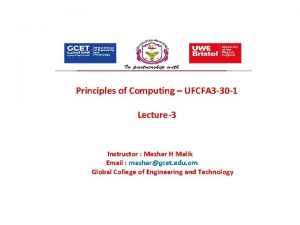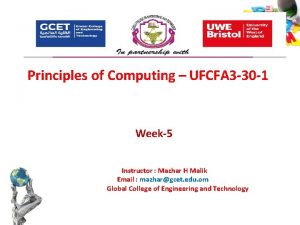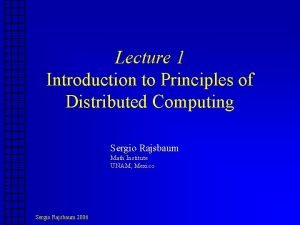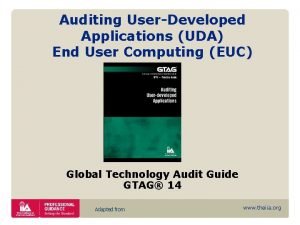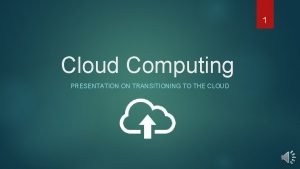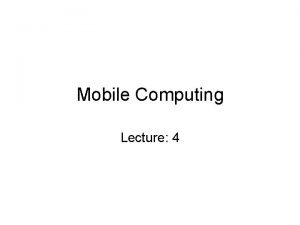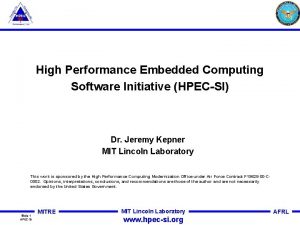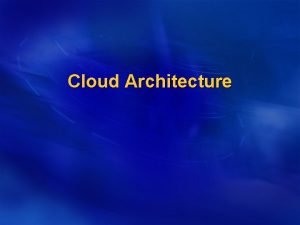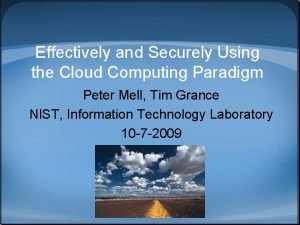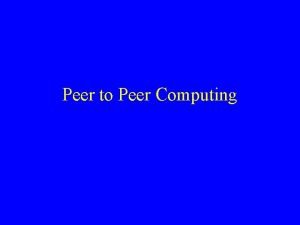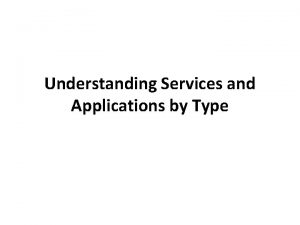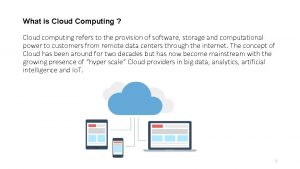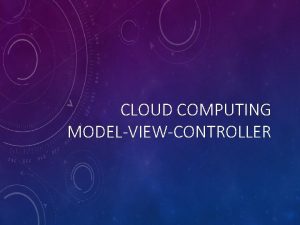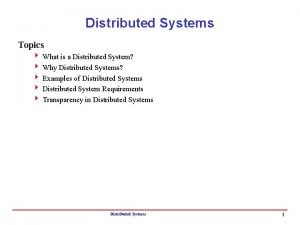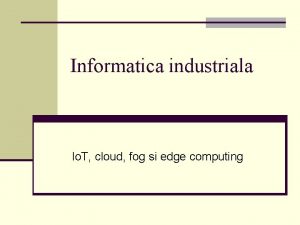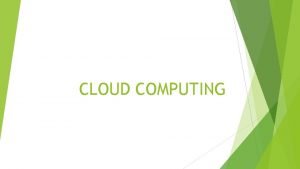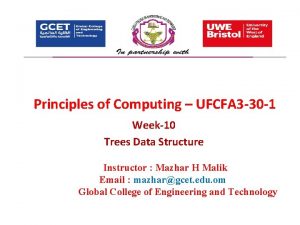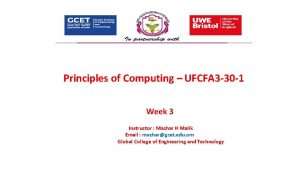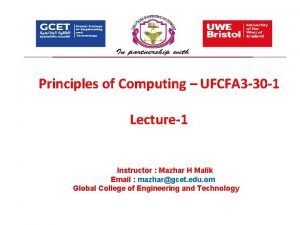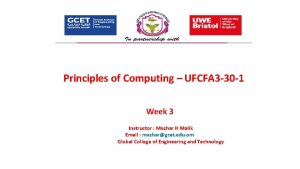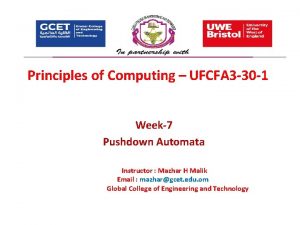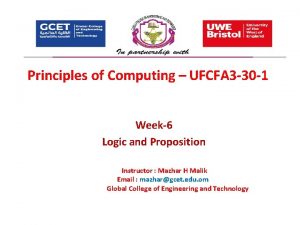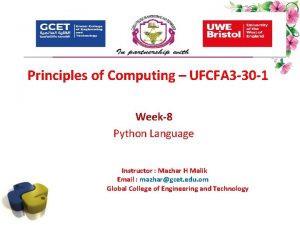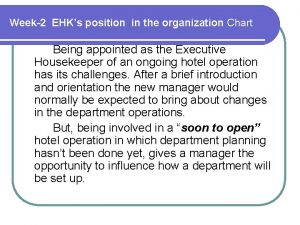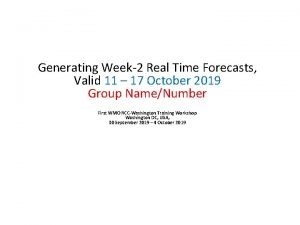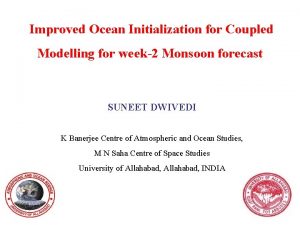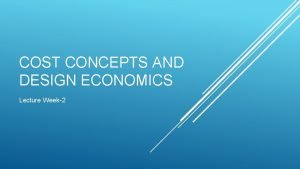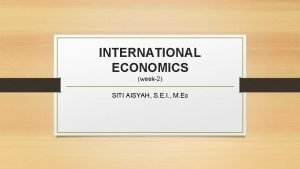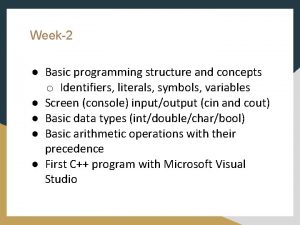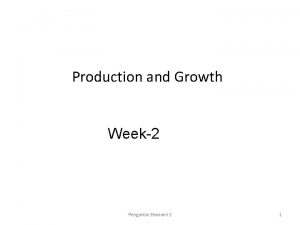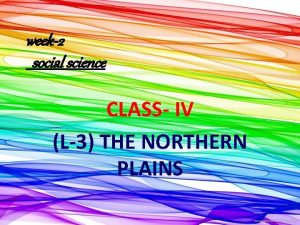Principles of Computing UFCFA 3 30 1 Week2



















- Slides: 19

Principles of Computing – UFCFA 3 -30 -1 Week-2 Instructor : Mazhar H Malik Email : mazhar@gcet. edu. om Global College of Engineering and Technology

Today’s Lecture • Enumerating

Enumerating 3

Enumeration, the counting of objects with certain properties

Enumeration 5

Enumeration 6

7

Exercise 8

Exercise 9

Exercise 1 0

Application of Mathematical structure to computing 1 1

Neural Network • An Artificial Neural Network (ANN) is an information processing paradigm that is inspired by the way biological nervous systems, such as the brain, process information. The key element of this paradigm is the novel structure of the information processing system. 10

Fuzzy Logic • Fuzzy Logic (FL) is a method of reasoning that resembles human reasoning. The approach of FL imitates the way of decision making in humans that involves all intermediate possibilities between digital values YES and NO. 11

Machine learning • Machine learning is the subfield of computer science that "gives computers the ability to learn without being explicitly programmed" (Arthur Samuel, 1959). 12

Automated reasoning • Automated reasoning is an area of computer science and mathematical logic dedicated to understanding different aspects of reasoning. The study of automated reasoning helps produce computer programs that allow computers to reason completely, or nearly completely, automatically.

Computer vision • Computer vision tasks include methods for acquiring, processing, analyzing and understanding digital images, and in general, deal with the extraction of high-dimensional data from the real world in order to produce numerical or symbolic information, e. g. , in the forms of decisions. 16

Natural language processing • Natural language processing is a field of computer science, artificial intelligence, and computational linguistics concerned with the interactions between computers and human (natural) languages. As such, NLP is related to the area of human–computer interaction. 17

Robotics • Robotics is the interdisciplinary branch of engineering and science that includes mechanical engineering, electrical engineering, computer science, and others. 16

Thank You
 Ufcfa
Ufcfa Ufcfa
Ufcfa Conventional computing and intelligent computing
Conventional computing and intelligent computing Principles of distributed computing
Principles of distributed computing Uda user developed application
Uda user developed application Conclusion for cloud computing presentation
Conclusion for cloud computing presentation Behavior management middleware
Behavior management middleware High performance embedded computing
High performance embedded computing Spi model in cloud computing
Spi model in cloud computing Elastic disk provisioning architecture
Elastic disk provisioning architecture Cloud computing paradigm
Cloud computing paradigm Computing table 1
Computing table 1 Peer to peer computing environment
Peer to peer computing environment Pods aggregation and silos in cloud computing
Pods aggregation and silos in cloud computing Traditional cloud computing
Traditional cloud computing Hvad er cloud computing
Hvad er cloud computing Mobile computer wikipedia
Mobile computer wikipedia Disadvantages of distributed system
Disadvantages of distributed system The edge of the cloud
The edge of the cloud Terminologi cloud computing
Terminologi cloud computing
